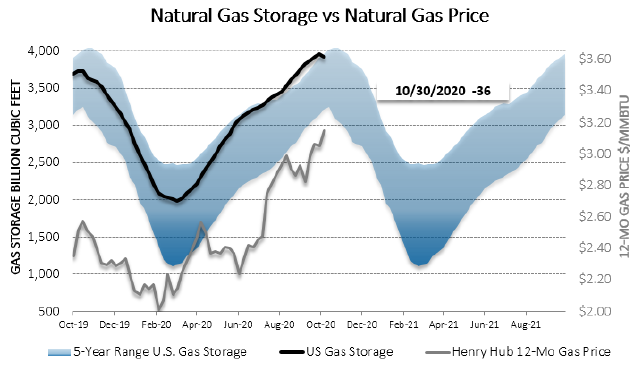POWER MARKETS

WEST Over the past two weeks, temperatures along the West Coast have fallen considerably and raised heating demand while the DC Intertie (which links the Pacif-ic Northwest to Southern California) has remained offline, keeping flexible supply to the Southern California grid down. Consequently, additional natural gas facilities have had to be dispatched in the region, driving up prices there not only for natural gas but also for power. Overall, SP15 has been clearing around $16.50/MWh higher than Mid-C over the course of November.
ERCOT Term prices have been mixed out the curve as term gas prices have intertwined with heat rates with little impact. This week’s main event was the volatili-ty in the real-time market. A combination of the recent heat and the idling of several generating units for seasonal maintenance has caused prices to settle at nearly $400/MWh for several super-peak hours, mainly in the Houston and South Load Zones. In turn, the MTD average in those zones has climbed into the mid-$30s/MWh, and the ORDC scarcity adder for November is now averaging $1.50/MWh, well above the averages for previous Novembers.
EAST Warmer weather has softened prices this week. In ISO-NE, they have dropped by almost $30/MWh from last week as both DA and RT are averaging around $15/MWh. PJM’s NI Hub has followed suit, DA and RT there also averaging $15/MWh. Over in NYISO, Hudson Valley is averaging $13/MWh for DA and $11/MWh for RT.